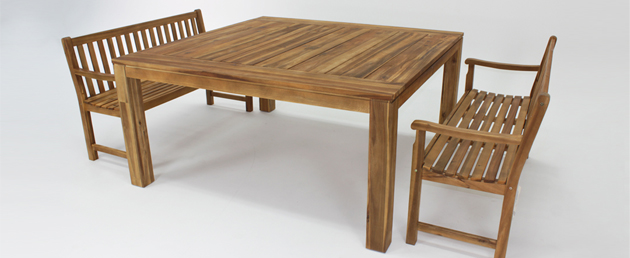Timber is a true outdoor furniture material: durable, attractive, and with a natural look that blends in with garden surroundings. However it does require some care. The amount and type of care and maintenance required for your timber outdoor furniture depends largely on the species and types of wood used, so this article will begin by examining the most commonly available species and their properties.
Outdoor Furniture Timbers
Teak
Teak is a tropical hardwood usually sourced from Southeast Asia, and renowned for its durability, solidity, and resistance to humidity and moisture. Teak ages gracefully, requiring only periodical cleaning and oiling in order to maintain its attractive surface colour and grain. If untreated, teak will weather to a silvery grey, which many people prefer if they are aiming to achieve a rustic or seaside look to their outdoor area. If on the other hand you wish to retain the rich, dark character of teak you will need to clean and oil it periodically.
Cedar
A softwood famous in ancient times as a shipbuilding timber, cedar is highly resistant to moisture and rot. Generally of a light colour, it does not easily splinter and has a very smooth surface when sanded.
Jarrah
Commonly used as timber decking for verandas, jarrah is a reddish or pinkish toned wood that is extremely durable and dense and thus holds up well in the harsh Australian climate.
Eucalyptus
A hardwood with a very attractive grain, eucalyptus is traditionally a native timber but is now largely grown in plantations so is environmentally sustainable. It is resistant to rot so will last many decades if cared for, and responds well to oiling.
Pine
An affordable and attractive softwood that comes in a range of varieties, pine is a light yellow colour. Because it is not particularly weather-resistant it needs to be stored indoors during the winter.


